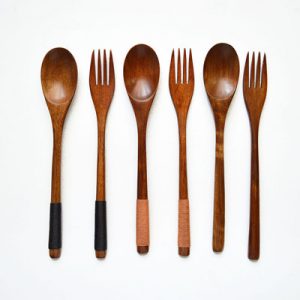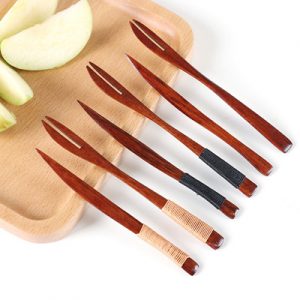Modern people are paying more and more attention to the diet. In addition to healthy and delicious dishes, even the tableware and kitchen utensils used are not sloppy. Especially the various wooden items seem to use them, and the lifestyle becomes completely different. However, it is worrying that although the woody products have texture, they are prone to mold and bacteria. Not only are the use period limited, but they are also a major concern for human health. How to solve such troubles?
1. Dry immediately after cleaning
Tan Dunci, a clinical toxicologist at Chang Gung Memorial Hospital in Linkou, pointed out that if you are used to using wooden cutlery (knives and forks) or kitchen utensils, it is best to dry them immediately after washing to ensure that the excess moisture of the chopsticks has been filtered out and kept in a cool place. Ventilation, avoiding long bacteria and mildew.
In addition, some people are accustomed to eating cutlery and other utensils directly in the bowl after the meal. Here, Tan Dunci reminds that if you use wood products, you should never do this. It is best to wash them immediately after eating and dry them immediately. It is recommended to use stainless steel cutlery, tableware, and other tableware when dining, it will be safer than ordinary plastic, melamine, wooden.
2. About painted wooden tableware
In the use of wooden knives and forks, there is another small trap, which is a protective lacquer attached to the knives and forks. Will it be unknowingly eaten toxic substances under long-term use?
In response to this, Dr. Lin Zhongying, from the Department of Toxicology, Chang Gung Memorial Hospital, Linkou, said that if you choose a wooden knife and fork coated with lacquer, you don’t have to worry. Because raw lacquer comes from the lacquer tree, it is a natural resin. After drying, it is not toxic and has the function of protecting tableware. It is not a big problem to choose products that have been certified by CNS.
As for other cutlery and varnishes of various colors in order to increase the aesthetics, Dr. Lin Zhongying said that these colorful pigments may contain heavy metals if there is no way to determine the source. These heavy metals are easily dissolved in food when they are exposed to high temperatures or oils. The accumulation of long-term accumulation affects the human body. Therefore, when purchasing solid wood cutlery, it is recommended to purchase wood-colored knives and forks.
3. How to use
The lacquered tableware not only has a bright surface but also is convenient for maintenance and use. Wooden utensils should be used for a long time and used with peace of mind. Lin Sufen reminds me that the following five small details should not be ignored:
1. When placing fried food, pada layer of blotting paper: When using wooden cutlery to fry fried chicken, sweet and not hot, high-temperature, high-fat food, remember to pad a piece of blotting paper to avoid direct contact with the wood. Help to extend the life of the tableware.
2. Don’t use wooden tableware to easily dye food: If you use wooden utensils with the lighter color, don’t put foods that are easy to dye, such as curry. When the pigment penetrates into the pores of the wood, it is difficult to clean. Leave a circle of yellow watermark on the edge of the cutlery.
3. Do not put in the microwave oven: Never put wooden utensils into the microwave oven. Because of its plant cell wall relationship, wooden tableware itself contains water. Once it is placed in a microwave oven for high-temperature heating, when the water content inside the tableware is not uniform, it is easy to be deformed or even cracked.
4. It is best not to put it in the refrigerator: It is best to change the container and put it in the refrigerator. The refrigerator itself will absorb water, and the wooden tableware will be placed in the refrigerator for a long time. The inside of the tableware will be easily deformed if it is too dry.
5. Moldy fruit should not be opened next to wooden utensils: Once you find that the fruit in the plastic bag is moldy, don’t open it. The moldy fruit can’t see spores on the naked eye, so it is easy to spread in the air. Because the wooden tableware itself contains water, it is easy to become a hotbed of mold.



